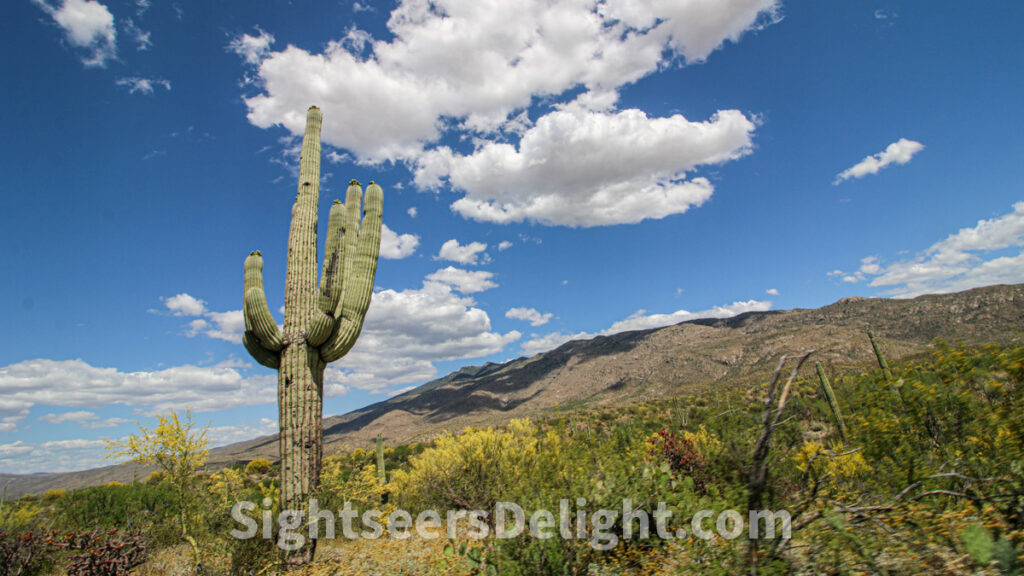TUCSON, Arizona — Tucson is a true gem, but its draw is more than just the desert; it offers visitors outdoor adventure, rich history and a vibrant culture to explore.
The Old Pueblo is one of North America’s oldest continuously inhabited cities. Paleo-Indians, known to have inhabited southern Arizona around 12,000 years ago, likely first explored the area.
The city’s mild winters and warm summers make it an ideal destination year-round. Desert landscapes surround the city, which is home to several stunning national parks, including Saguaro National Park, a stunning natural wonder.
The park is known for its abundance of Saguaro cacti, which grow to 60 feet tall and live for up to 200 years. Visitors can hike through the desert landscape, take a scenic drive or attend ranger-led programs to learn more about the Sonoran Desert’s unique ecology.
In addition to the iconic Saguaro cactus, the park is home to various other flora and fauna, including desert wildflowers and animals such as coyotes, javelinas and desert tortoises.
The Mission San Xavier del Bac, nicknamed the White Dove of the Desert, is among the city’s most popular historical sites — and an absolute must when visiting the city.
Spanish missionaries built the stunningly beautiful and historic Catholic mission in the late 1700s. The structure, a unique blend of Spanish Baroque and Native American architectural styles, features intricate carvings, colorful frescoes, and beautiful sculptures, all set against dramatic desert landscapes.
Tucson has many family activities, including the Arizona-Sonora Desert Museum, a renowned botanical garden, zoo and natural history museum all in one. It is an immersive experience that celebrates the beauty and diversity of the Sonoran Desert, one of the most biologically rich deserts in the world.
The museum spans 98 acres of desert habitat and features more than 230 animal species and 1,200 types of plants. Visitors can encounter animals such as desert bighorn sheep, mountain lions, javelinas, and venomous reptiles up close in their natural habitats.
The botanical garden is home to desert plants, including towering saguaros, delicate cacti, and colorful wildflowers. The museum also has a hummingbird aviary, a butterfly garden, and a Raptor Free Flight program where visitors can enjoy birds of prey as they soar overhead.
For a different view of history, head to the Titan Missile Museum, a former intercontinental ballistic missile (ICBM) site about 25 miles south of Tucson. The site, the only Titan II complex from the late Cold War period to survive, was constructed in 1963 and deactivated in 1984.
This museum, run by the nonprofit Arizona Aerospace Foundation, includes an inert Titan II missile in the silo and the original launch facilities. It was declared a National Historic Landmark in 1994.
Tucson’s location on the border with Mexico means it has a rich culinary tradition that blends Mexican and Southwestern flavors. In 2015, UNESCO designated the city as a City of Gastronomy, the country’s first.
The city is famous for the Sonoran hot dogs, a bacon-wrapped frankfurter topped with beans, onions, tomatoes, mustard, and mayonnaise, all served on a soft bun.
The best place to try a Sonoran hot dog is El Guero Canelo Restaurant, a family-owned Mexican restaurant. Daniel Contreras, born in Magdalena, Sonora, founded the restaurant in 1993 and owns and operates three El Guero Canelo restaurants and other establishments.
The crown jewel of Tucson restaurants is Maynards Market & Kitchen. The popular eatery is known for its contemporary American cuisine, locally sourced ingredients and extensive wine list.
The restaurant is located in a building with a rich history, having been built in 1919 as a train depot.
